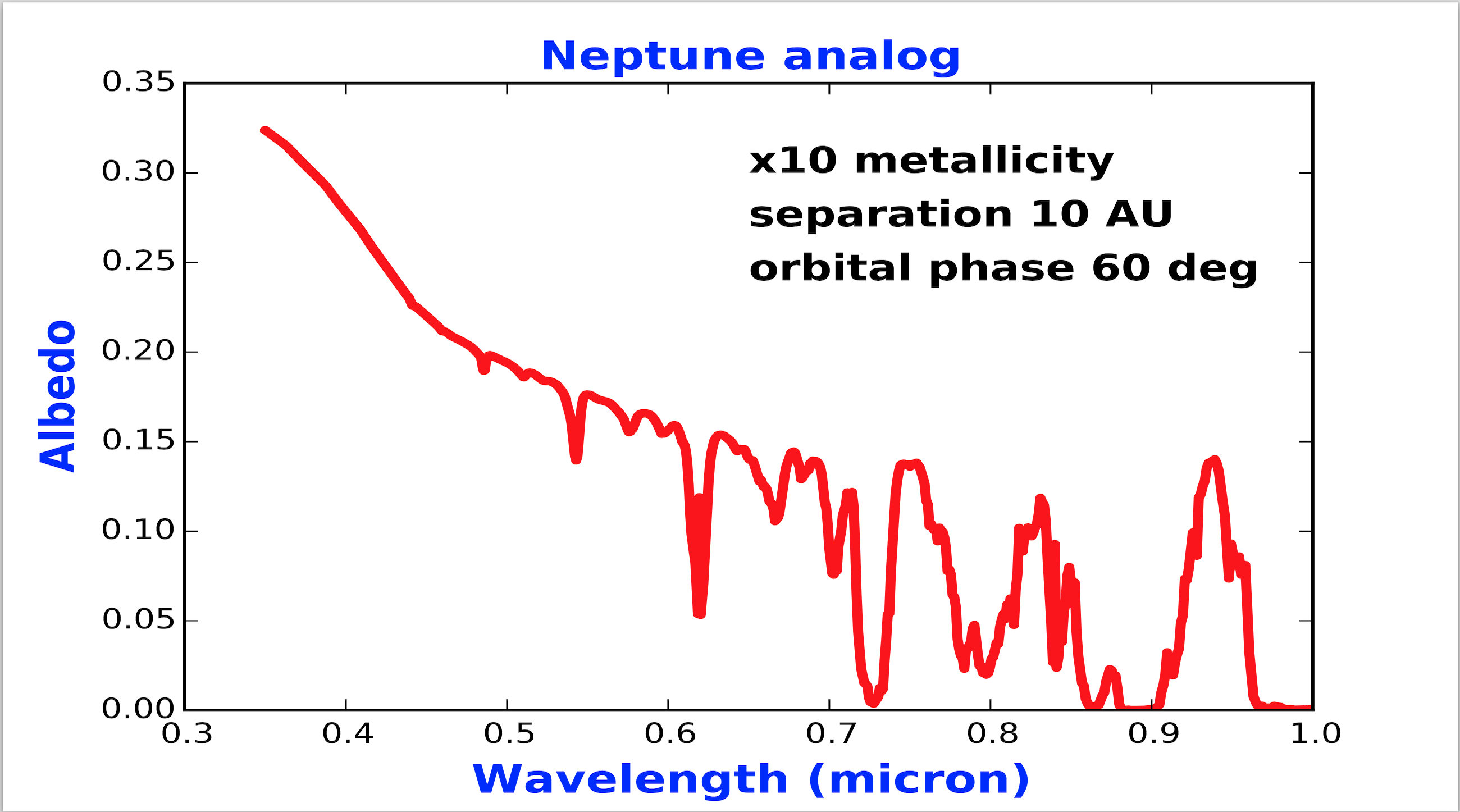Roman Space Telescope Coronagraph Instrument Exoplanet Characterization
Summary
The Roman coronagraph will observe exoplanets in reflected light at visible wavelengths. Therefore, in order to simulate the signals expected, realistic assumptions must be made about the photometric flux, orbital information and exoplanet albedo spectra. In addition to providing inputs to Roman Coronagraph Instrument Spectroscopy simulations, the simulated characterizations can be used to assess the feasibility of discriminating exoplanet signals from that of background galaxies based on their expected broadband colors.
On this page we host the products of some of these investigations - most notably, upcoming results from the WFIRST (now Roman) Preparatory Science awards (WPS) and Science Investigation Teams (SITs), as well as recent results from the wider exoplanet community of interest in the context of simulating Roman Coronagraph Instrument observations.
Simulations
Exoplanet Imaging Mission Database
The Imaging Mission Database is a merge of the information in the NASA Exoplanet Science Institute Exoplanet Archive with calculated photometric, orbital, and direct imaging completeness information for planets of interest to the direct imaging community. It also includes potential blind search targets from the ExoCat-1 Catalog along with their depth of search values. Further documentation is available on the IMD website.
brRoman Science Investigation Team Exoplanet Simulations
The Macintosh and Turnbull Science Investigation Teams created a number of simulations for both reflected-light and self-luminous exoplanets. See the compilation of all public datasets and associated publications.
Exoplanet Albedo Spectra (Cahoy et al. 2010 Model)
Radiative transfer calculations of reflected-light spectra for exoplanets with different atmospheric compositions and under different system geometries is an active area of investigation.
The exoplanet albedo spectra and colors have been calculated for Jupiter and Neptune analogs as a function of planet phase, separation from the host star, and metallicity by Cahoy et al. (2010). The resulting models (gzipped tar file) have been made available by Nikole Lewis (STScI). Please see the README file for information on the format and contents of the data files and for properly crediting the models.
